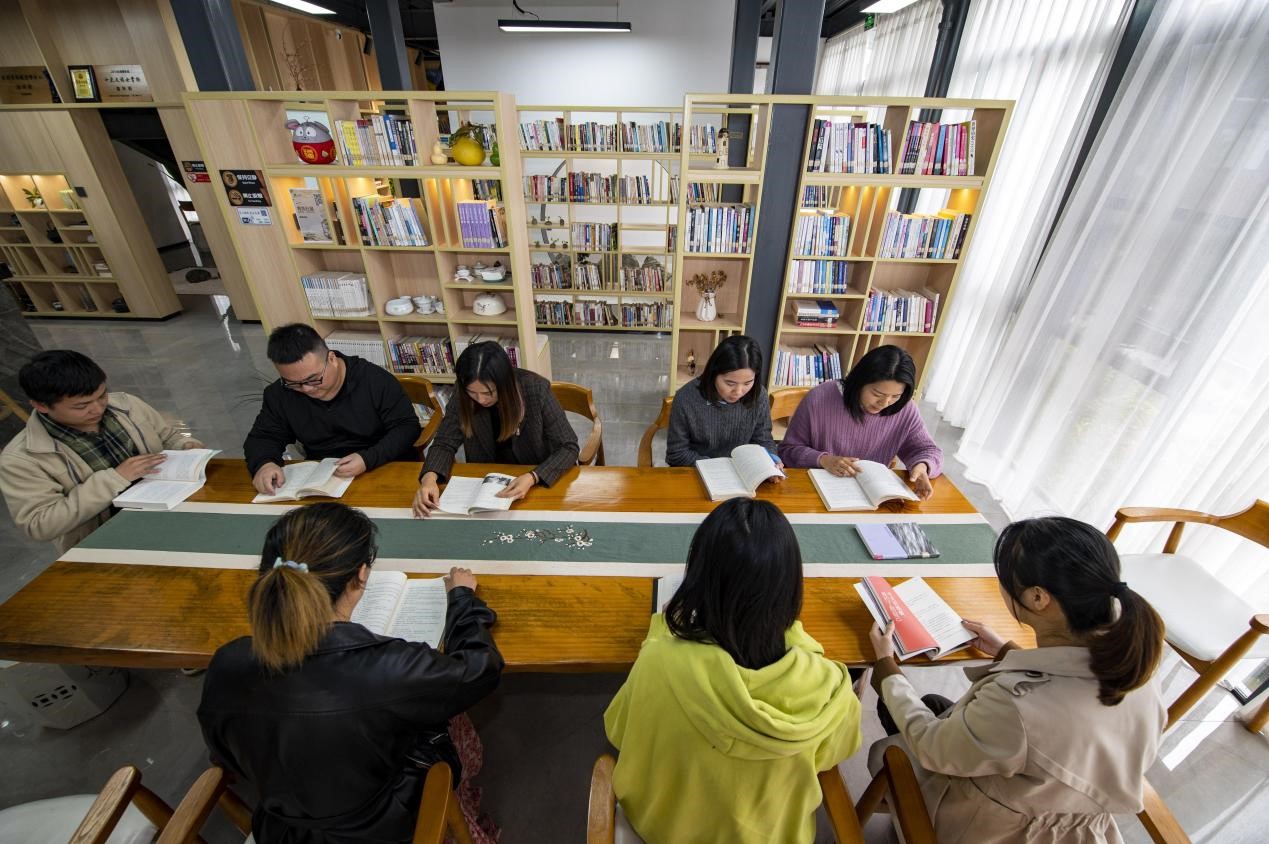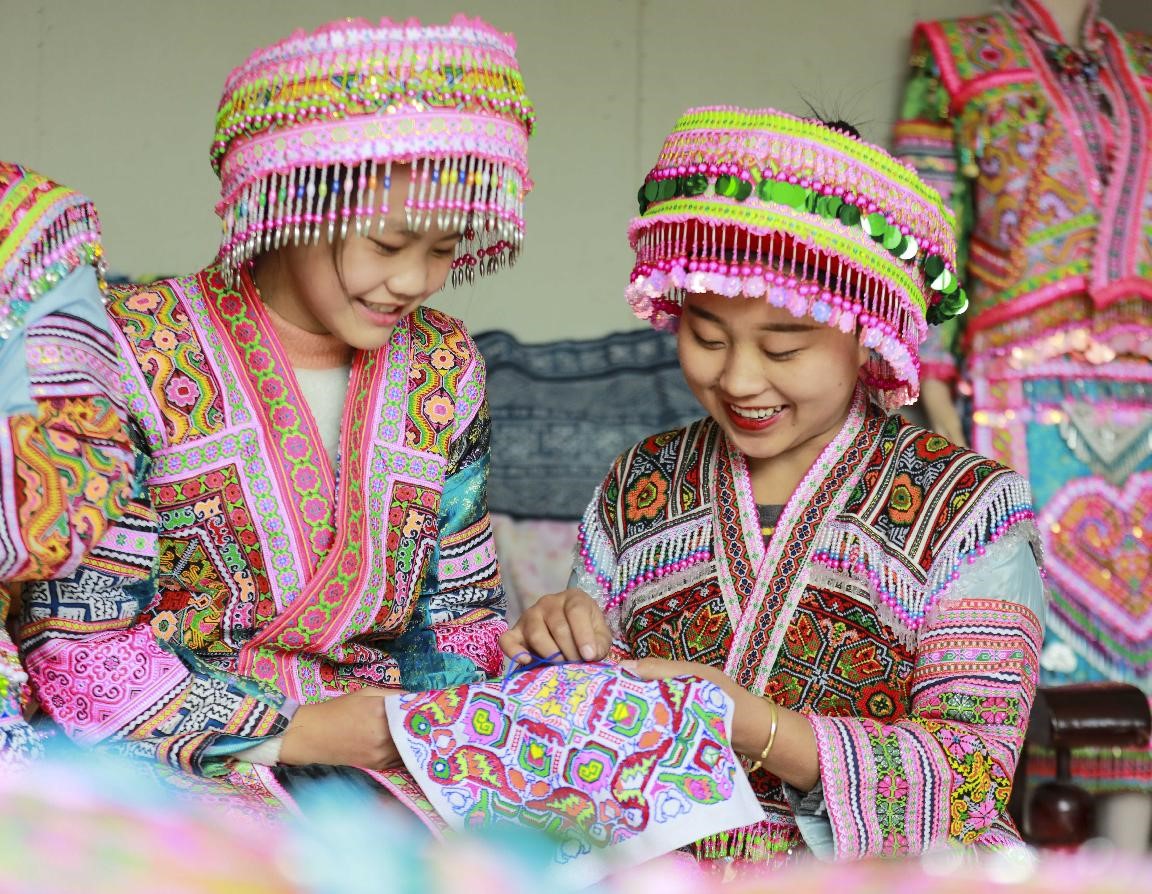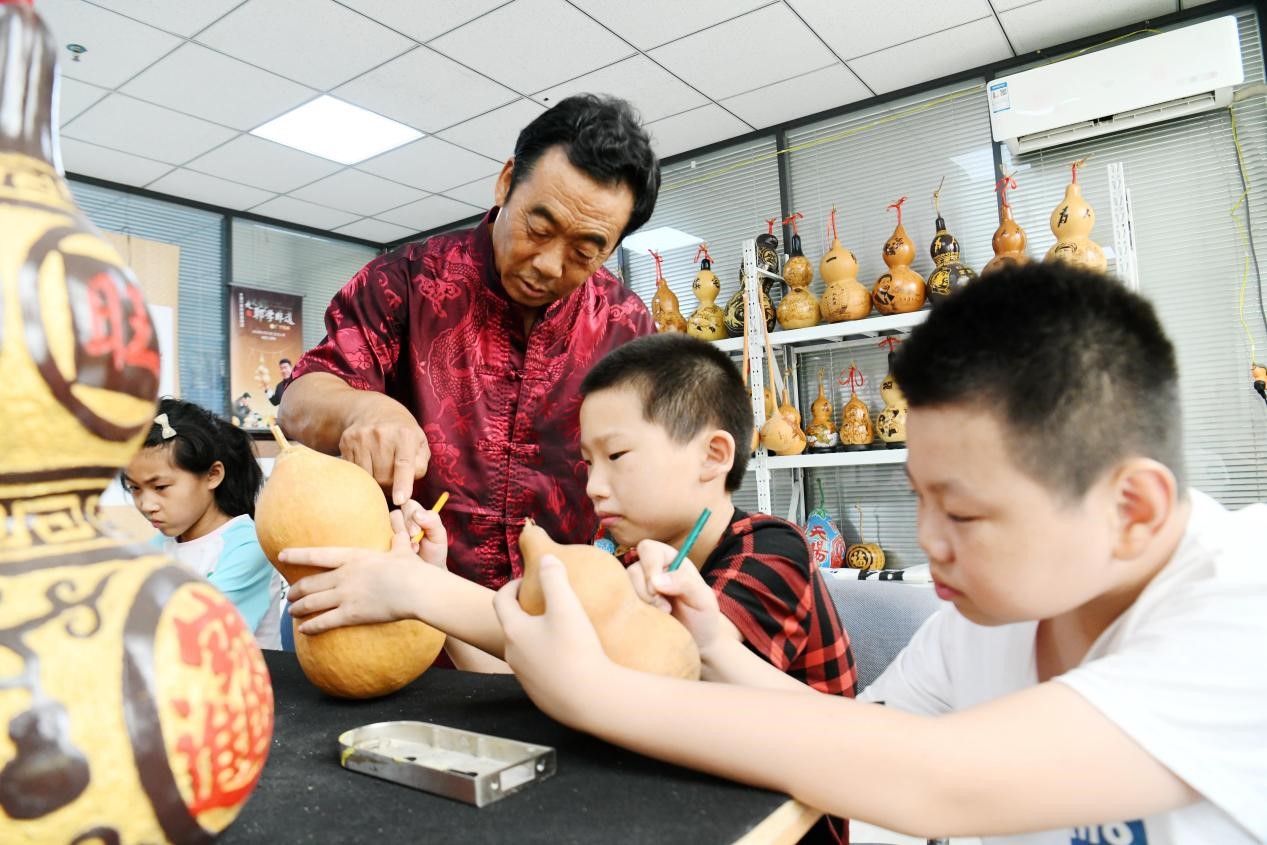China rolls out multiple measures to enrich rural residents’ cultural life
In fully implementing the rural vitalization strategy, China has emphasized cultural and ethical advancement and improvement in social etiquette and civility in rural areas while boosting the economic development of these areas and improving the living standards of rural residents.

Villagers read at a newly renovated library in Hushang village, Pan’an county, Jinhua city, east China’s Zhejiang province, Nov. 2, 2021. (People’s Daily Online/Hu Xiaofei)
Various regions across China have constantly promoted the development and prosperity of rural culture by improving infrastructure, introducing high-quality cultural resources into villages, and scientifically protecting and utilizing traditional rural culture.
As public cultural infrastructure facilities in the countryside have been continuously improved, rural residents in China are living an increasingly rich cultural life.
Zhangzhuang village, Lankao county, central China’s Henan province, has built an auditorium to hold lectures on the latest policies, agricultural technologies, and health care knowledge for villagers; Shiqiao village, Nanxun district, Huzhou city, east China’s Zhejiang province, set up a library to enable children to indulge themselves in books; and Suzhan village, Ganzhou district, Zhangye city, northwest China’s Gansu province, built a cultural square to enrich people’s leisure time. Residents usually dress up and gather at the cultural square to celebrate a good harvest.
China has built a total of 575,000 village-level integrated cultural service centers. All administrative villages in the country are equipped with libraries, digital reading rooms, and cultural activity rooms.
From 2016 to 2020, the central government of China allocated over 5.85 billion yuan ($918 million) to cultural stations in townships (sub-districts) to keep them open to the public free of charge.
“It’s really exhilarating that I can now appreciate traditional Chinese opera right in my village,” said Fang Zhenwen, a senior resident of Fangguantun village, Jiaxiang county, east China’s Shandong province.
By staging traditional Chinese opera, hosting cultural performances, and conducting square dancing and calligraphy training, Jiaxiang county helps farmers feast on diversified cultural activities near their homes.
In recent years, China’s cultural authorities have held about 10,000 activities every year to encourage literary and art workers to stay in close touch with the people and produce works close to real life.
A series of key cultural projects launched to benefit rural people, including making broadcast television signals available in all villages and film screening in rural areas, have been continuously advanced.

Women of Miao ethnic group embroider at a workshop in Honglin Yi and Miao township, Qianxi city, southwest China’s Guizhou province, Nov. 14, 2021. (People’s Daily Online/Zhou Xunchao)
In Xihe county, northwest China’s Gansu province, embroidery, the local intangible cultural heritage, has led villagers to a better life.
“Many local women are skilled embroiderers. I help them look for buyers and sell products via e-commerce platforms. We have developed over 1,000 kinds of embroidery products,” said Bao Hualan, manager of a local embroidery company, adding that each household sees an annual income of more than 100,000 yuan, thanks to embroideries.
Not only have the local embroidery skills been inherited and promoted, but villagers have become better-off, Bao noted.
Rural areas are considered an important carrier of traditional Chinese culture, including intangible cultural heritage, farming culture as well as the culture of traditional villages. Various regions across China have put into scientific protection and utilization conventional rural culture and developed characteristic cultural industries.
Since 2012, the Ministry of Agriculture and Rural Affairs of China has identified 118 key agricultural culture heritage items in five batches.

Long Changqing, an inheritor of the intangible cultural heritage of calabash painting, teaches children the technique at Beiwu village, Guangping county, Handan city, north China’s Hebei province, July 14, 2021. (People’s Daily Online/Cheng Xuehu)
From 2016 to 2020, relevant government departments in China have supported the establishment of more than 2,000 intangible cultural heritage workshops for poverty alleviation, which helped hundreds of thousands of people find jobs and increase their income.
The increasingly rich cultural life in the countryside has given new looks to villages and lifted the villagers’ spirits.
To guide villagers in raising cultural-ethical standards, Mazhuang village, Jiawang district, Xuzhou city, east China’s Jiangsu province, has established a band, enabling residents to immerse themselves in music in slack farming season. The band, which has become increasingly mature, has not only made villagers more united, but turned into a new calling card for the village to attract investment.
Such examples are widely seen in rural China, which has built a complete public cultural system with venues, activities, and participants. While farmers live a more colorful cultural life and their cultural needs have been satisfied, civilized rural customs and folkways, as well as good family etiquette and manners in the countryside, have also been passed on and developed.
Photos
Related Stories
- Vocational training helps boost rural vitalization in Xinjiang: residents
- Hangzhou City in Zhejiang promotes handmade dried noodles to develop agricultural, rural tourism industries
- E-commerce heralds prosperity in remote south China village
- China's rural vitalization in full swing
- Xinhe County in China's Hebei boosts rural vitalization
Copyright © 2021 People's Daily Online. All Rights Reserved.










